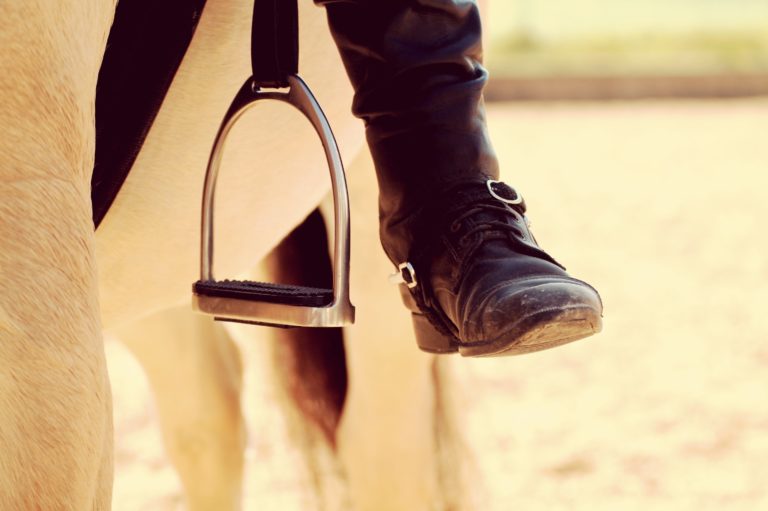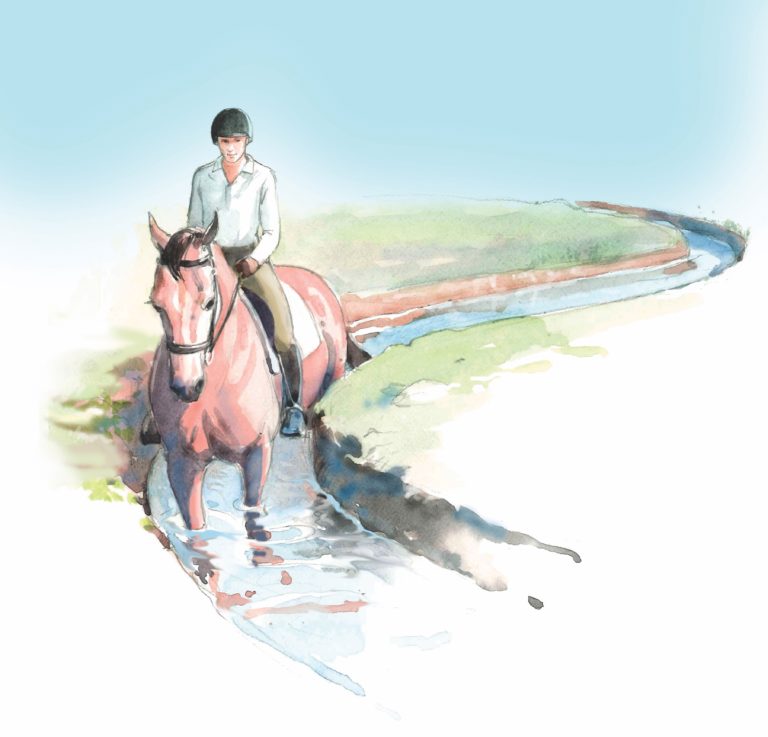Diane Barber, a Dressage Today contributing writer and student of Olympic medalist, Rafael Soto, spent an afternoon with him at the Royal Andalusian School of Equestrian Art in Jerez, Spain, where he oversees the riding department. They talked about his methods of dressage training, including in-hand work and airs above the ground. After their discussion, Soto demonstrated piaffe and passage in-hand. He then changed into traditional Spanish riding costume and masterfully presented levade, corbette and capriole with three of the school’s PRE show horses.
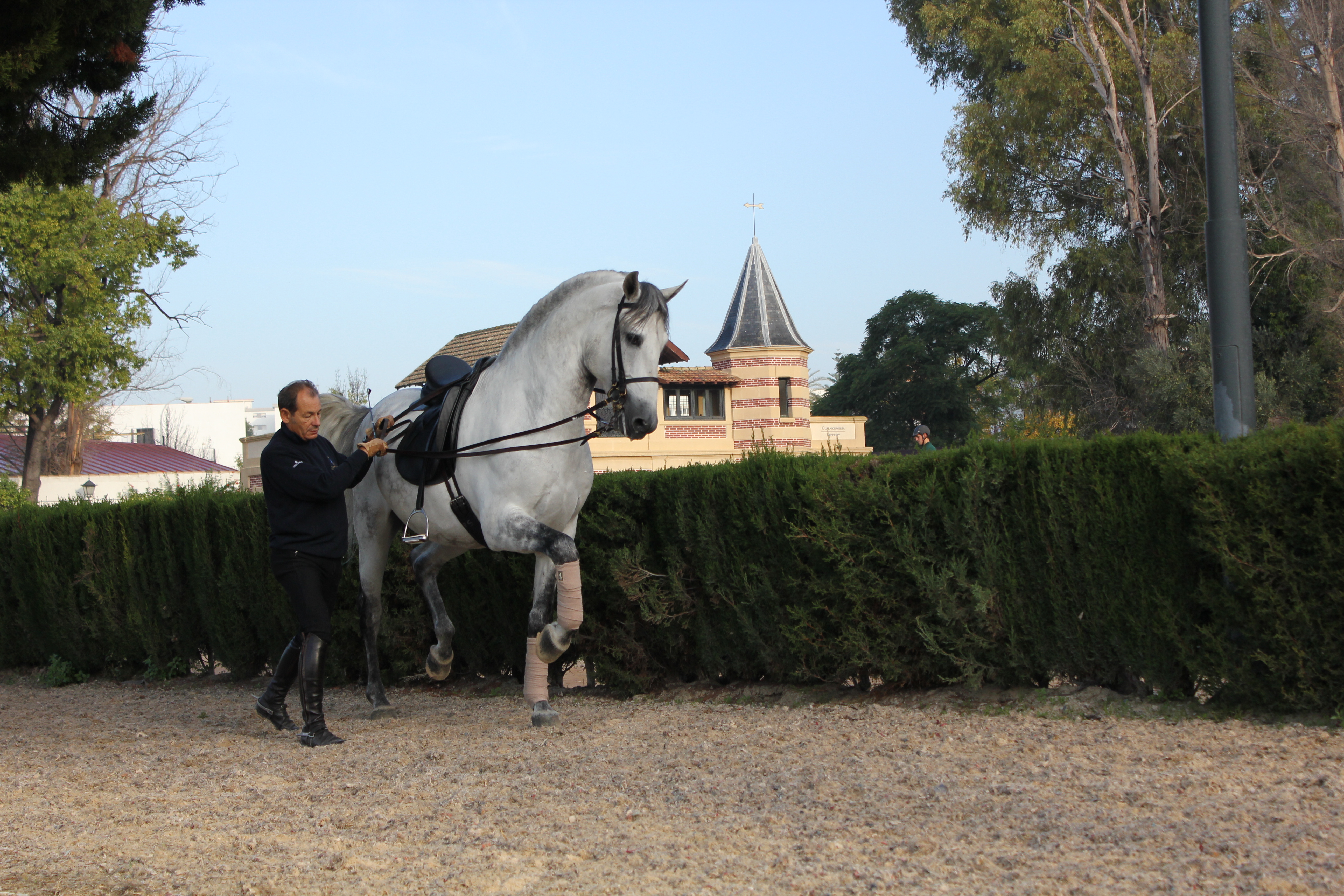
DB: When do you begin training dressage in-hand with a young horse?
RS: At the Royal School the work is typically introduced when the horse is 4 years old and after he has been ridden for one year. In six months, a horse usually has good balance and rhythm at the walk, trot and canter. After that, for the first year I do work in-hand two times a week just before I ride the horse. It is important not to do it too much. Twice a week is enough.
DB: How do you introduce the in-hand work and what do you start with?
RS: Once a horse accepts the aids on the ground well, I take him in-hand with a snaffle and put the reins over the horse’s neck, similar to long reins but on the side instead of behind. Then I can start doing some shoulder-in and I begin to ask for piaffe from beside the horse just behind the saddle. I use my voice with the whip behind and I make the hind legs move a little bit. I do this for maybe five minutes in each hand while I am searching for ways to get small steps for the creation of piaffe. If I do this two or three times every week, by the time the horse is 5 years old he knows piaffe very well and accepts the whip positively. I then continue working this way for one year, still just two or three times a week. When the horse is 6 years old and can do a very balanced and confident piaffe and he knows the aids of my voice, the whip and half halt very well, I put a student on at the end of the work. Then we do a bit of work in-hand with the rider in the saddle to prepare the horse for me to ride him in piaffe.
DB: When and how do you teach passage?
RS: I start teaching passage after a horse does a very nice piaffe, which is usually at 6 years old. Learning piaffe first is very important. When the horse horse is good at piaffe, I can go from piaffe to trot and use the whip to the correct cadence to get passage steps. Passage is an evolution of the trot in the dressage horse and piaffe prepares for a better evolution. I start in-hand to ask for a forward and collected trot and I touch the whip on the croup to create uphill action and suspension in the trot to get passage. If that doesn’t work, I go back to piaffe, then piaffe to trot, and try again for passage.
DB: How important is piaffe for training airs above the ground?
RS: Piaffe is the foundation and is indispensable to teach a horse to do the airs because he must collect all of his power and compact his body in the hindquarters to be able to do levade or corbette, which requires difficult jumps one after the other. It is the same with the capriole and the jump to kick out with the hind legs.
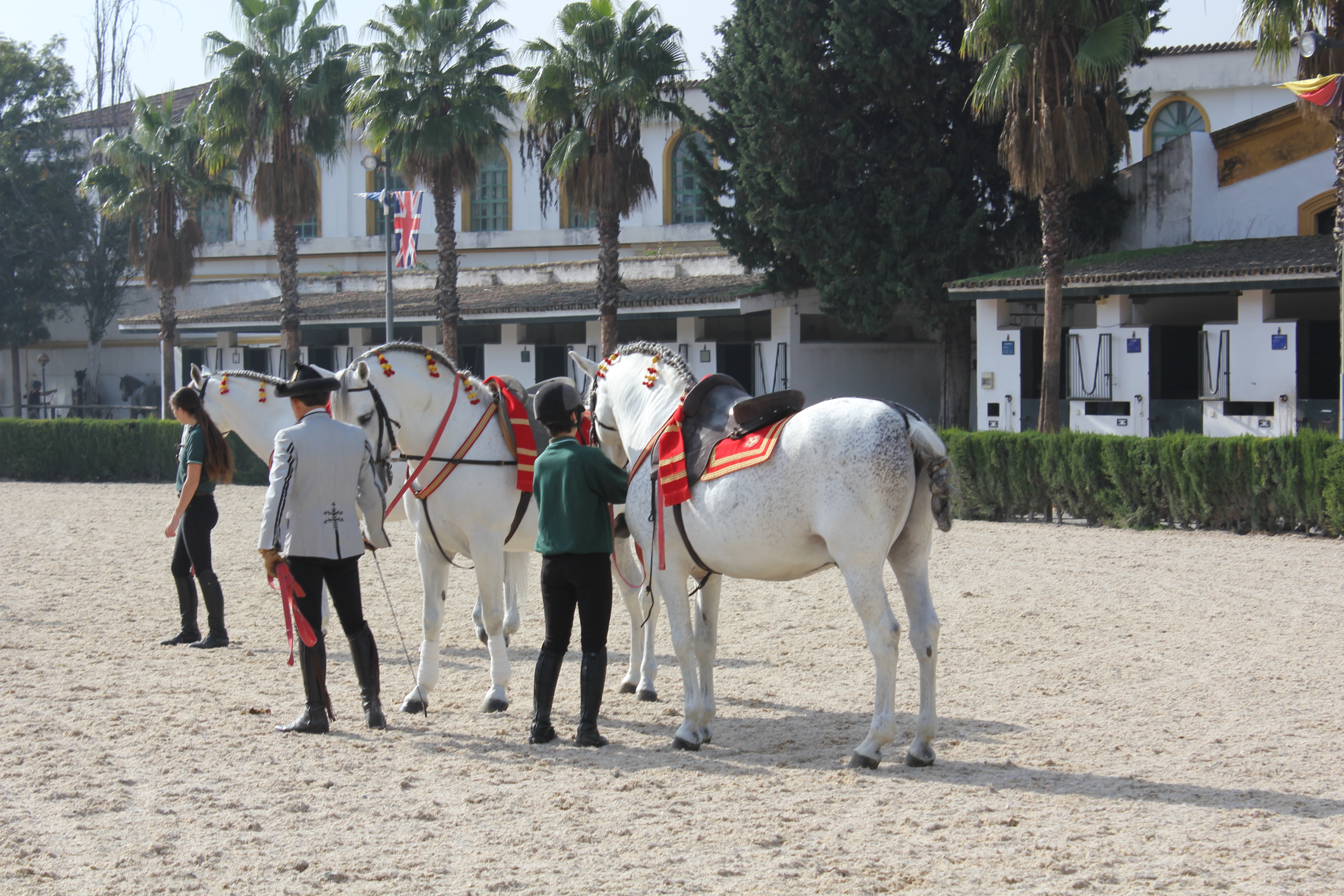
before performing
in-hand movements.

DB: Are all the horses at the Royal School able to perform airs above the ground and can they do them with a rider?
RS: No, not all of the horses perform airs above the ground. I have to say that the horses who do the airs are specialists at them because they have a great temperament and ability for the jumps. Some have a talent for levade, others have a talent for the corbette and others have a special talent for capriole. Some of the horses will do them in-hand on the ground and with a rider. But there are only a few who can do that. In total, in the school we have about six horses for capriole in-hand and maybe two of them can also do it with a rider. Of the horses who can do corbette, we have about four and only one can do it with a rider.
This is a very high level of training! All the horses who do work in-hand with the jumps are ridden and can do piaffe, passage and flying changes. But they do not do the Grand Prix dressage in the show. We dedicate them to work in-hand and the jumps just like I dedicated Invasor [Rafael’s former Andalusion stallion] to Grand Prix dressage only.
DB: How long does it typically take for a horse to learn the airs and how important is conformation?
RS: If a horse has talent, by 6 years old, after the two years of work that I mentioned before. But to do it really well a horse needs more time. Usually around age 7 the horse will be ready do it in the show. Conformation is very important to be successful with the airs. The conformation of the Andalusian horses is perfect for the jumps because the breed is short and compact, which makes it easier for them to do the movements. The best horses in the world to do airs above the ground are definitely the Baroque horses.
DB: You mentioned that you use a snaffle bit for piaffe and passage in-hand. What equipment do you use for the airs?
RS: The cavesson is used for work in-hand with the airs above the ground. I start the horses the same as I do with the young horses, with side reins and with a cavesson in front. I work like this a little bit almost every day to start to bring the horse uphill with his shoulders, then I just use the cavesson without side reins. When the horse is doing the airs above the ground he needs to be on a longe line so he is free to jump, which is very different from piaffe and passage in-hand, when the reins are held close to the horse much like when riding. When performing the airs the horse is in a snaffle bridle, but he is not working off the reins because they are attached to the sides of the saddle. The cavesson is attached on the nose for more control of the head and so there is no risk of hurting the horse’s mouth. It also helps hold the longe line in place.
DB: How do you teach a horse to transition from piaffe to levade?
RS: When a horse is ready to do levade he tells me because he sits very well for the piaffe. To ask him to do it, I go up with my left hand on the cavesson and push a little bit with the whip behind him to make him sit for the levade. The moment I put the whip at the hindquarters he just wants to go up with his shoulders and his front legs to sit on his hocks.
DB: What are the basics of teaching corbette?
RS: For the corbette it is more difficult. I position myself on the side of the horse a little in front or just behind the saddle. First, I must ask the horse for piaffe then bring him uphill very balanced and straight. Then I touch with the whip and ask him to jump with the hindquarters. Normally, I touch on the croup or if I’m in front, just inside the front legs or in front of the hind legs. Where I touch with the whip depends on the horse because every horse has a different place to ask.
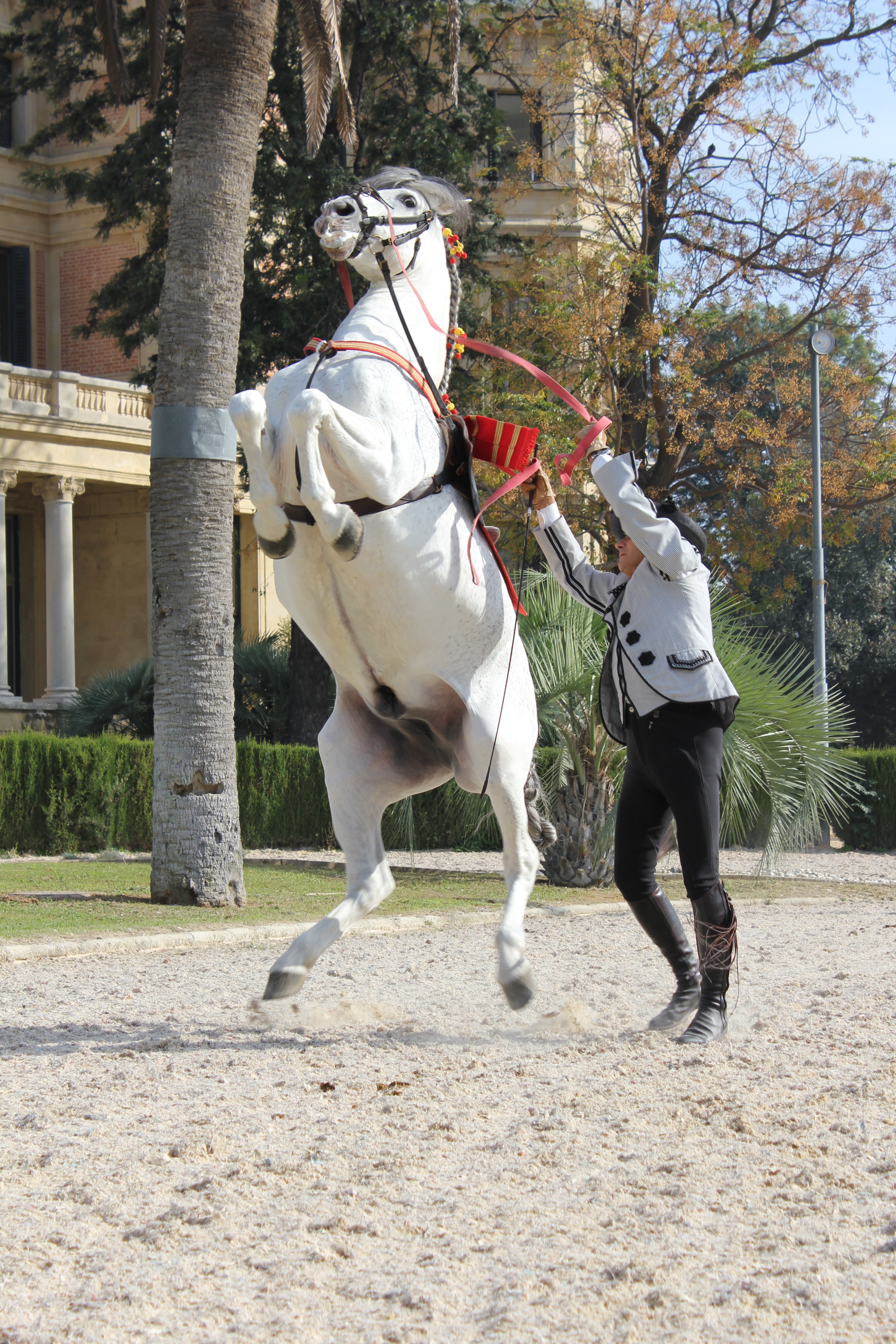
DB: Where did the capriole originate and how do you teach it?
RS: The capriole was a defense against the enemies in wartime and is very natural. You very often see it when horses are outside fighting or playing together. Sometimes they are running and suddenly stop and turn and do it. All of the jumps come from the nature of the horse when he is free with a group of horses. Some people think that it hurts the horse, but it does not. In all my life, I never saw any horse injured because of doing capriole or any airs above the ground.
To teach capriole, we do it in two parts with two people. First, we teach the horse to move the front of his whole body up and down like a levade with the hind legs moving and supporting him. Then, when the horse is uphill and balanced, the person in the back moves a longe whip up and behind to get him to stretch and kick out his hind legs. As with all of the training, each time we do it is very short.
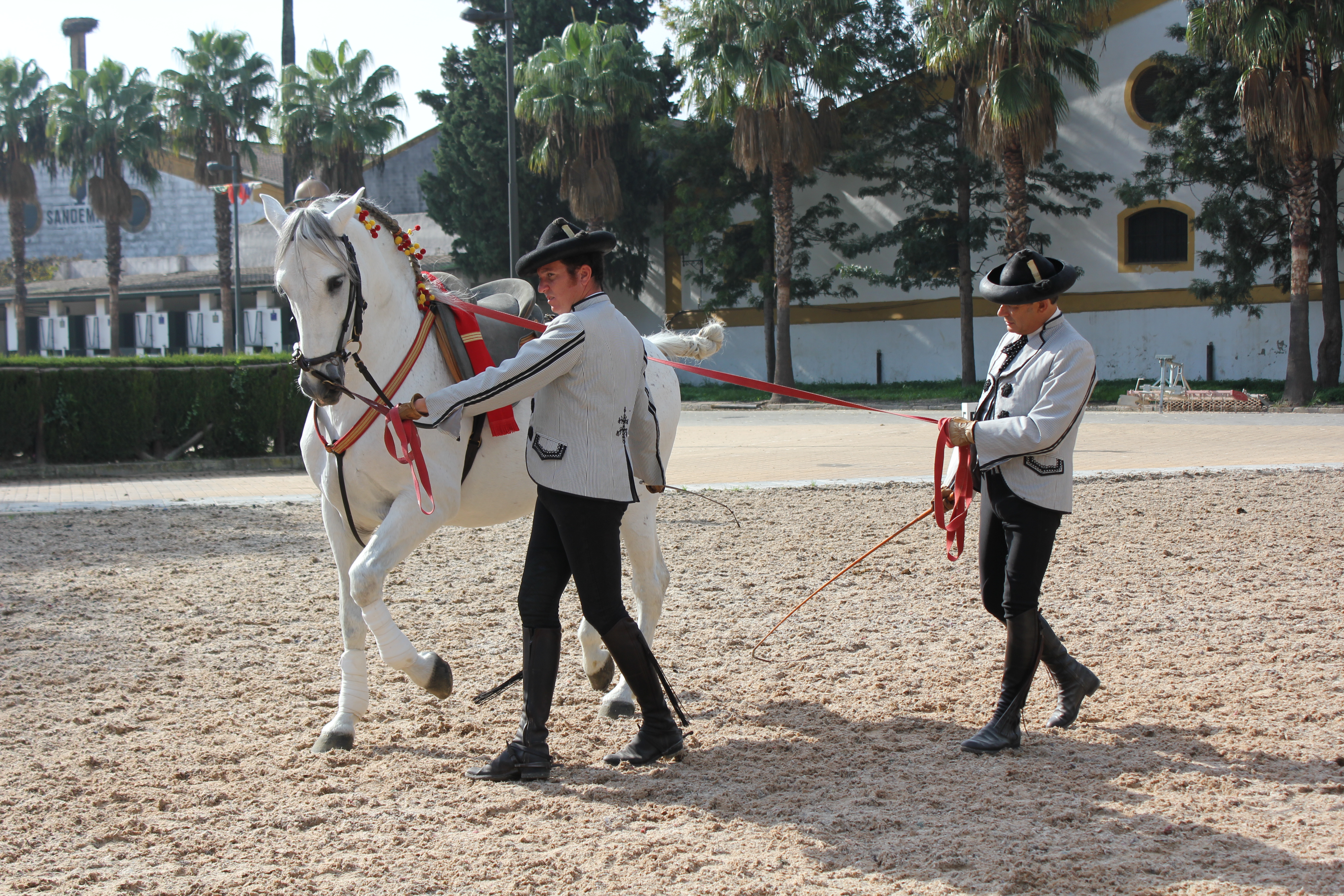

DB: Which of the airs above the ground is the hardest to teach?
RS: Corbette, of course! Levade is just one jump and capriole is just one jump. The corbette is a few jumps and the horse has to jump, recover the balance, do another jump, recover the balance again and then another jump. It is very difficult.
DB: How do you reward a horse in training and after work?
RS: Always a pat and a little sugar so the horse knows he did a good job.
DB: Are the airs ever performed in horse-show competitions?
RS: No. The jumps are performed for exhibitions like you see in the shows at the Royal School. We do it to preserve the type of historical riding of kings and wartime. We also do it to improve their fitness. Sometimes the four best schools in Europe (Spain, Portugal, Saumer and Vienna) come together and maybe we do a little competition among us. Vienna and Portugal do jumps the same way we do. But Saumur only does corbette and capriole and no levade. And for them, in the corbette the horse just stands up and then goes back down.
DB: Which airs above the ground movement is your favorite and why?
RS: Corbette! It is very difficult to get a horse to do a good corbette, so that makes it the most rewarding for me.
Diane Barber lives in Los Angeles and is a lifestyle writer and interior designer. She is a dressage enthusiast with a passion for Spanish horses and travels to Spain frequently to train with Rafael Soto and his protégé, Vivi Garcia. To learn more, visit realescula.org and andalucia.org.
Find
More
on DTO!
In this video at DressageTodayOnline.com/Rafael, dressage master Rafael Soto emphasizes the use of lateral work to improve connection in the walk and engagement in both the trot and canter. These exercises in this series are geared for Second Level through Grand Prix, but portions can be applied to all levels of training. This is Part One in a three-part series. If you’d like to watch them all, we offer a free month at DressageTodayOnline.com/30free to all Dressage Today readers and we hope you’ll make DTO your go to
for on-the-go learning!



